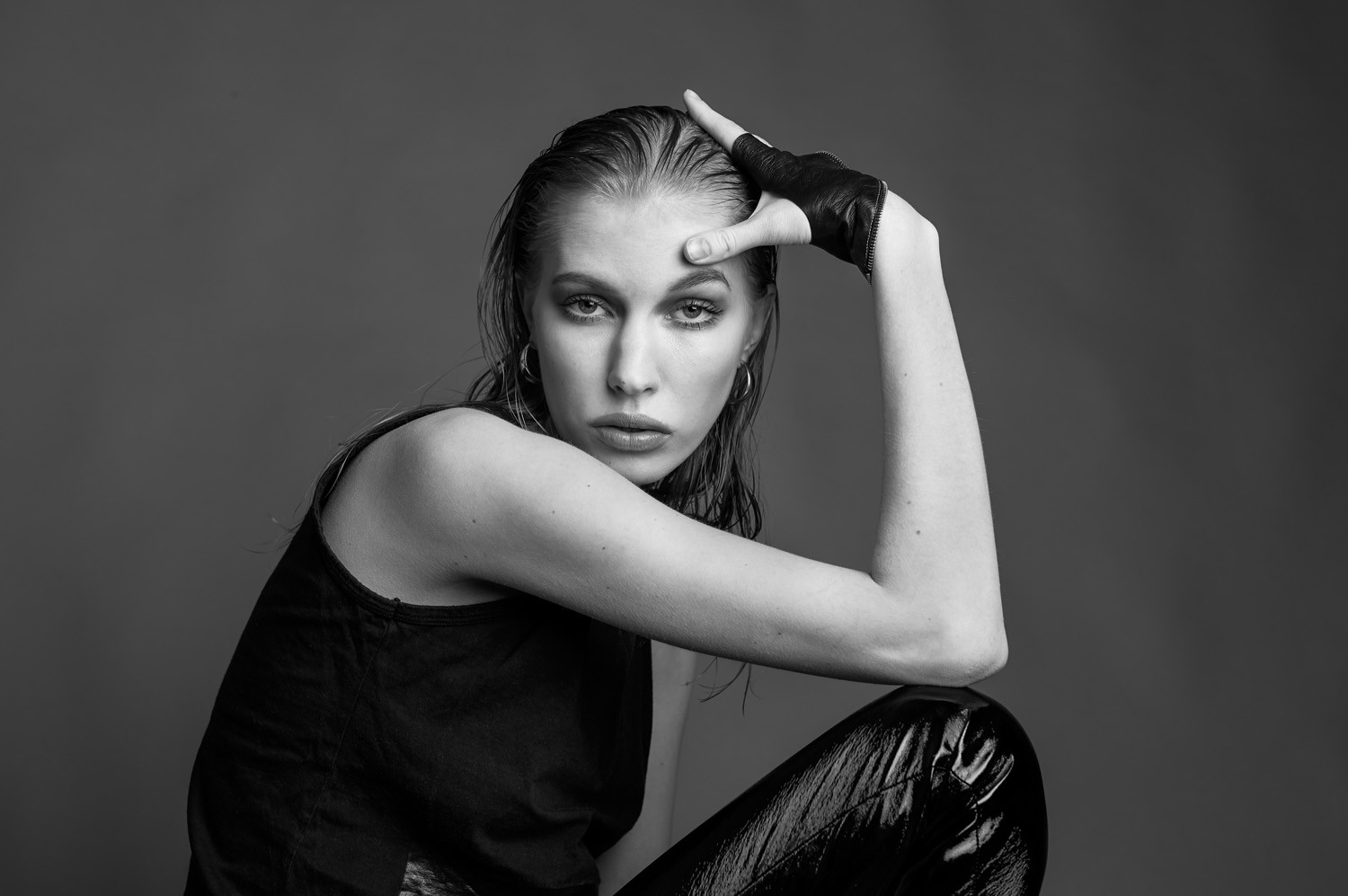

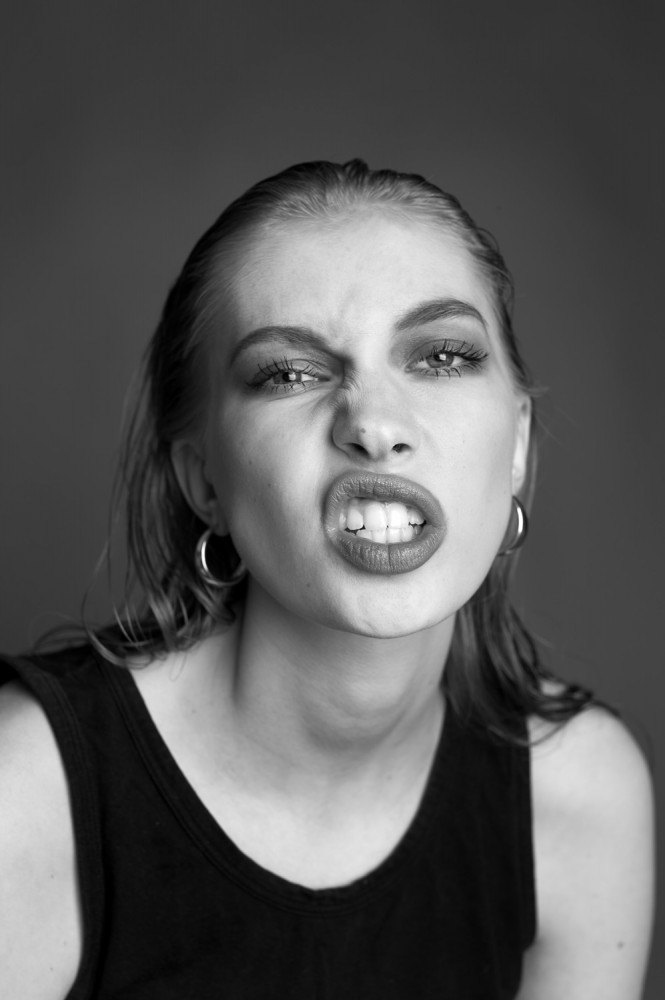
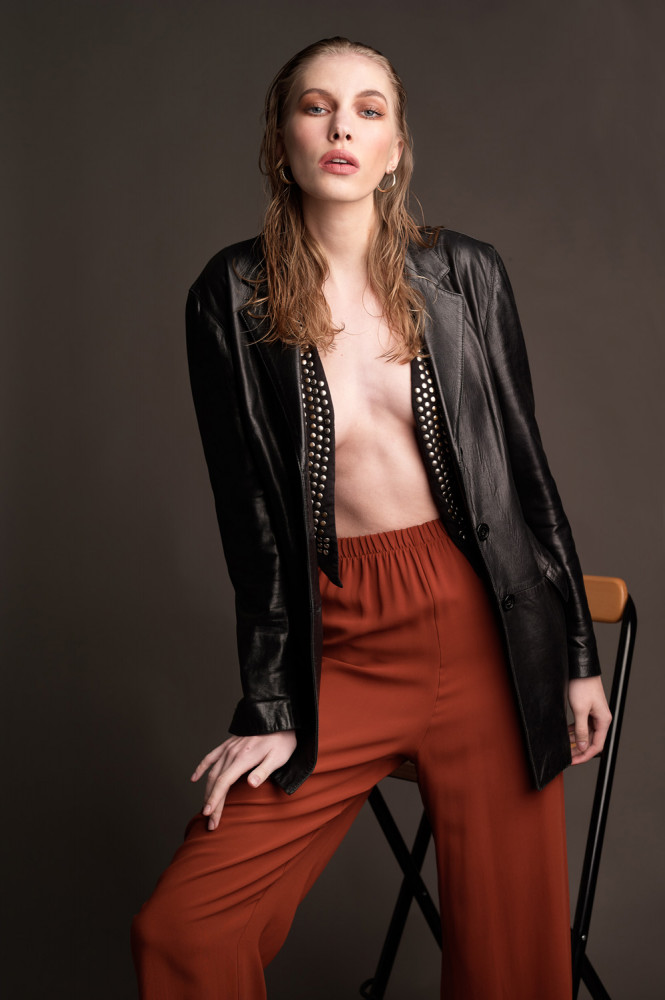
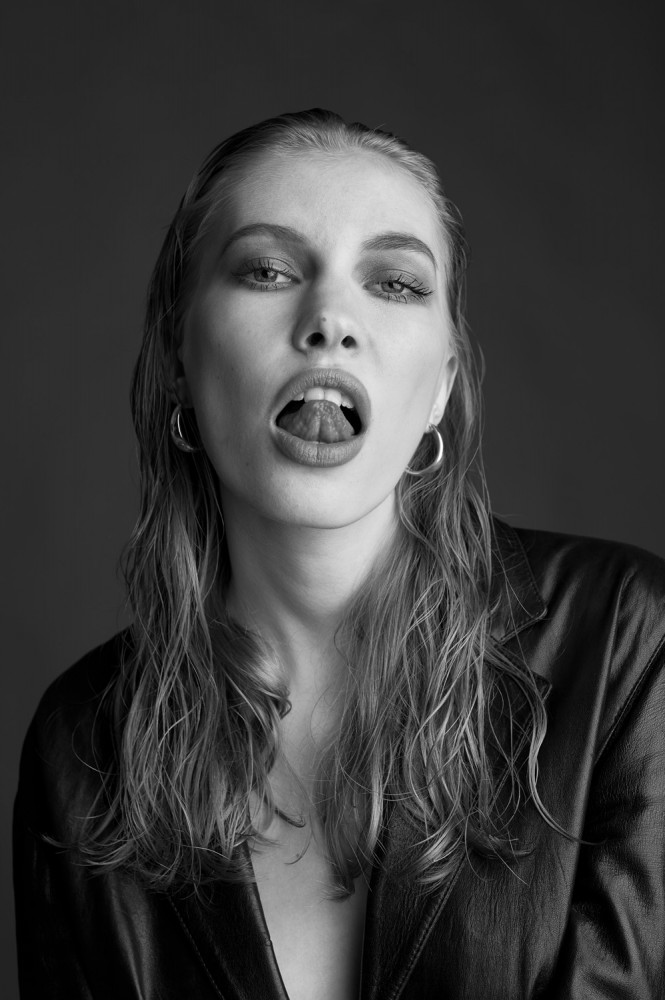
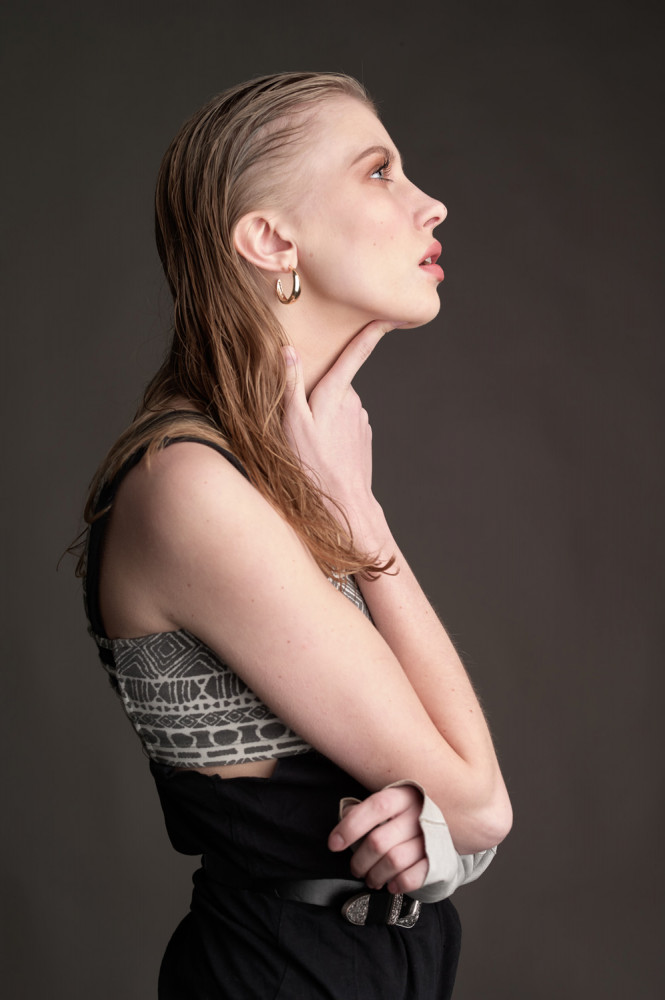
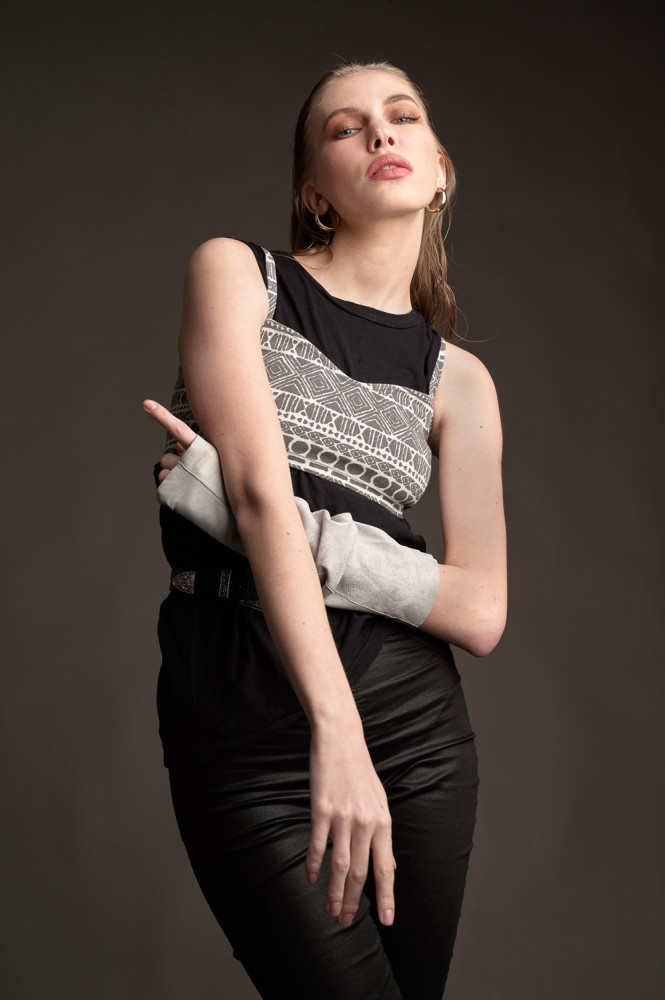

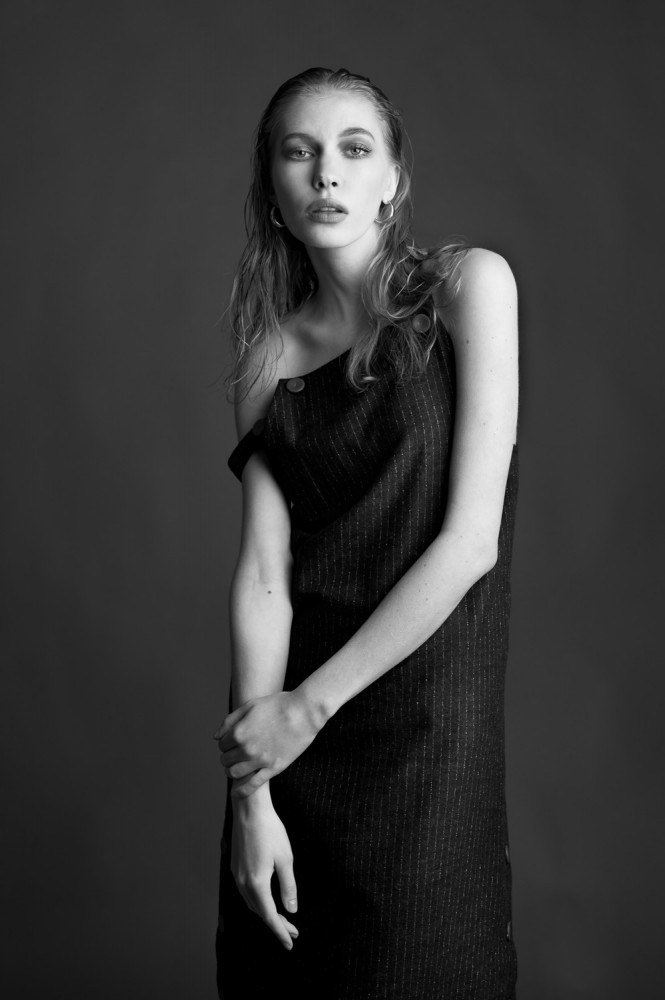
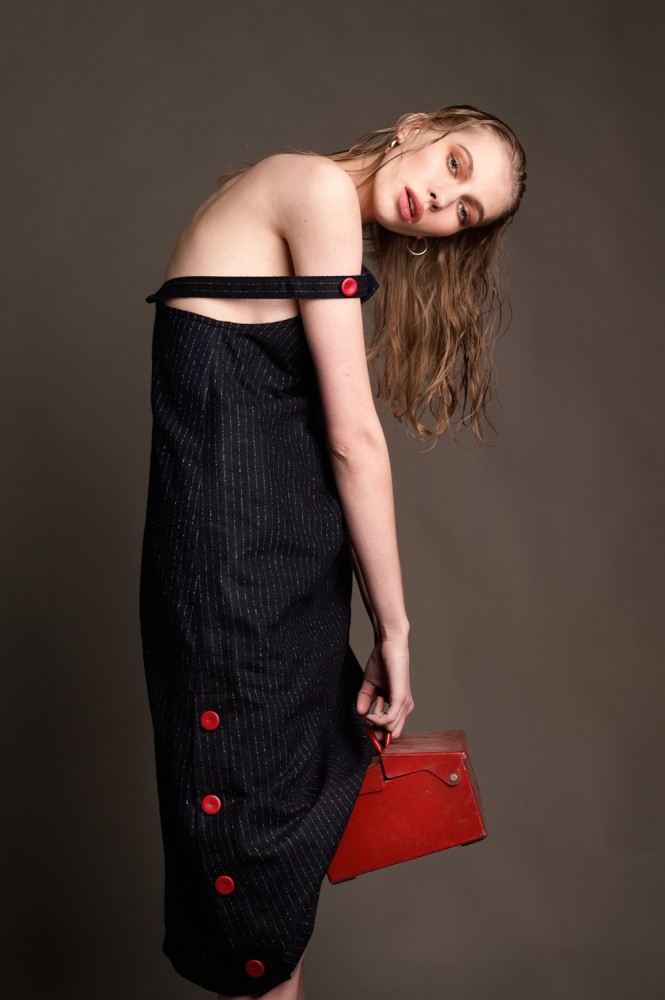
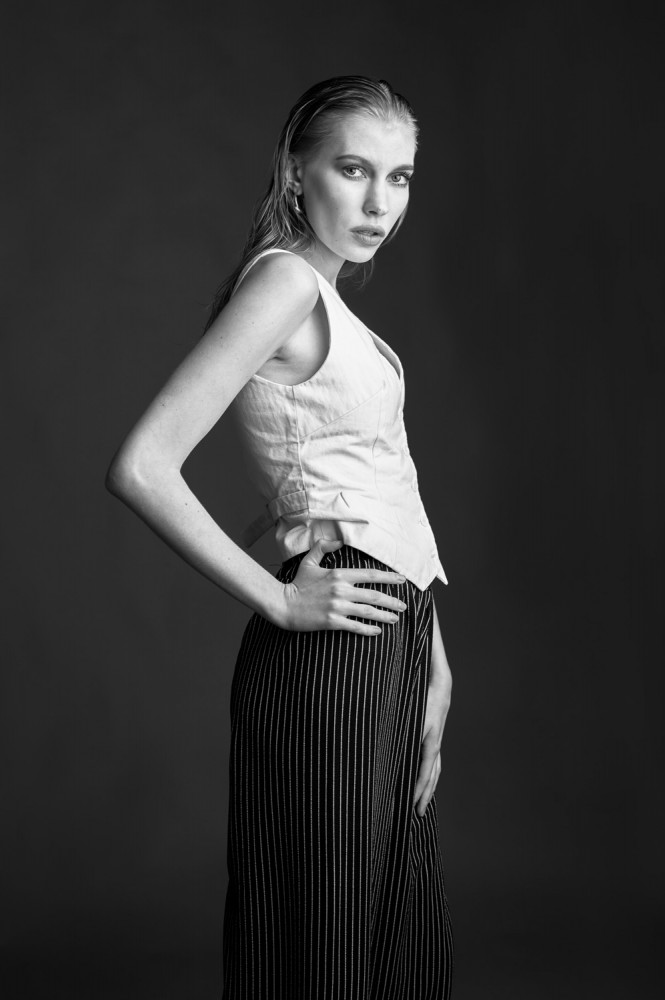
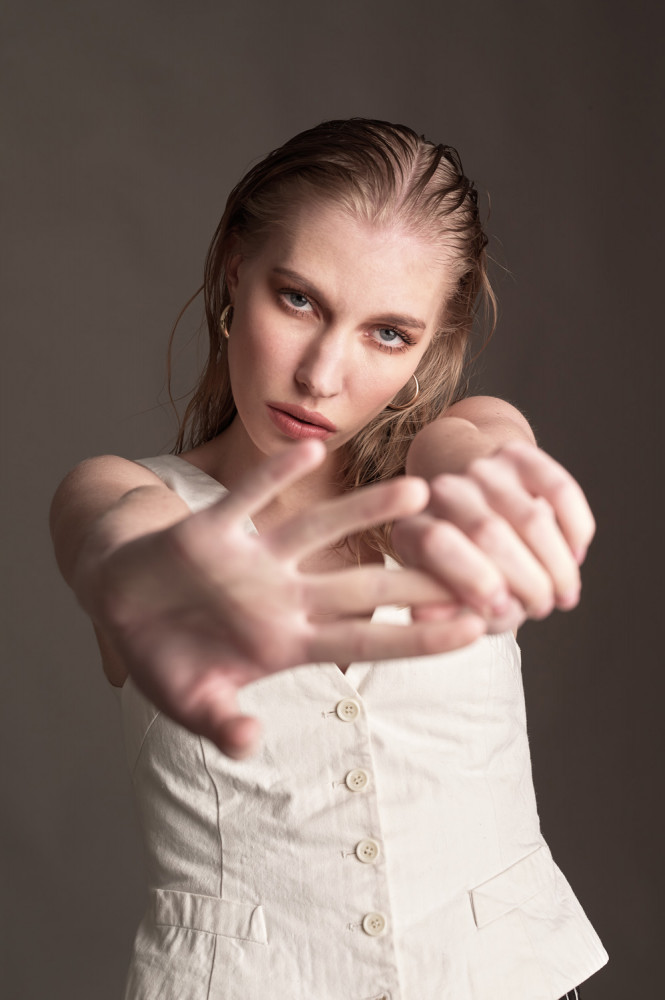
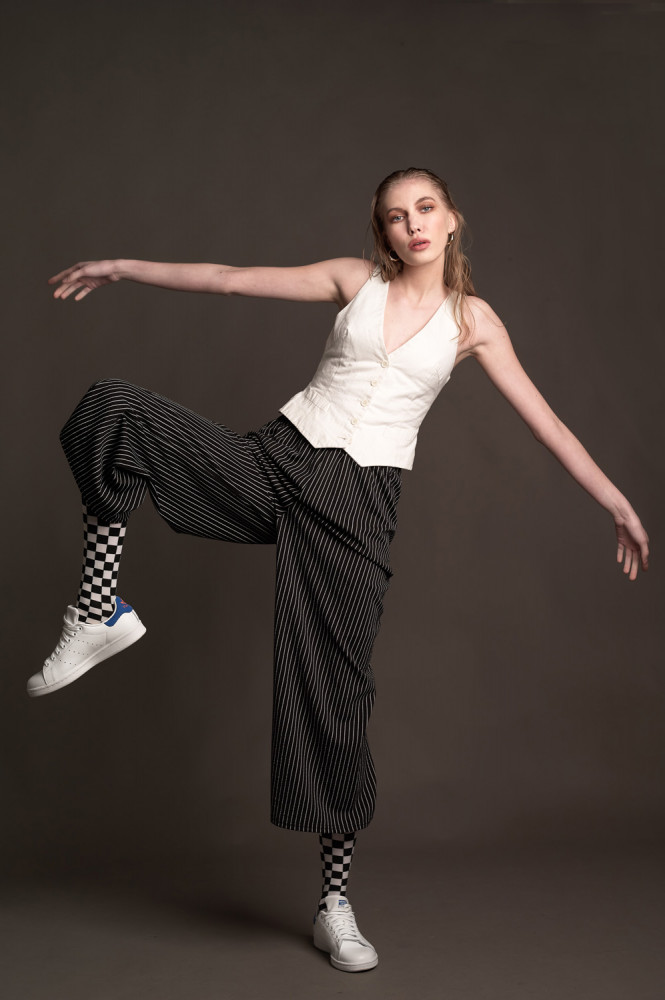
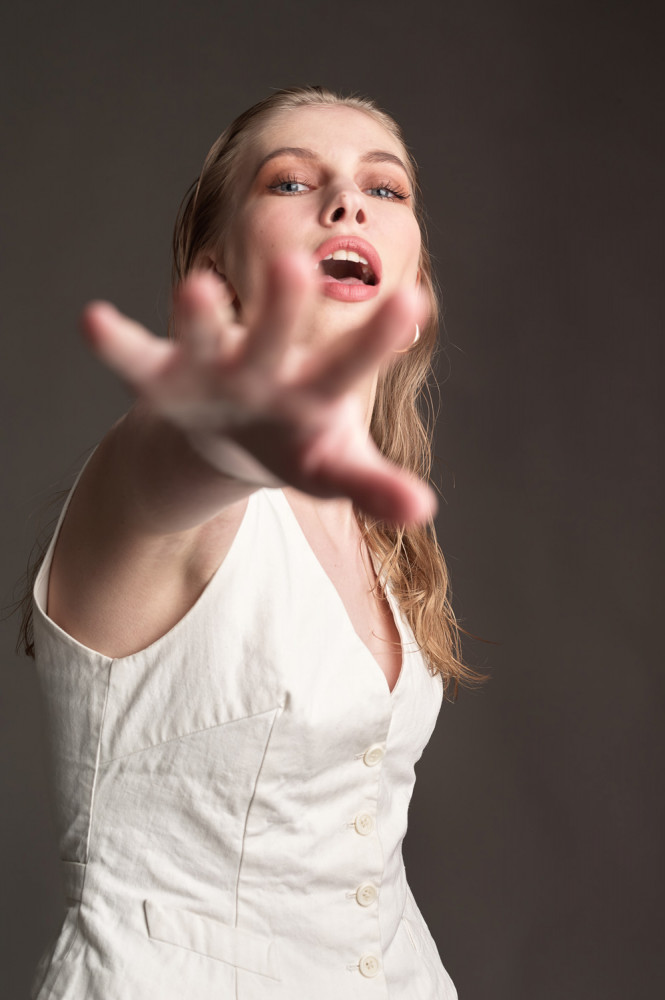
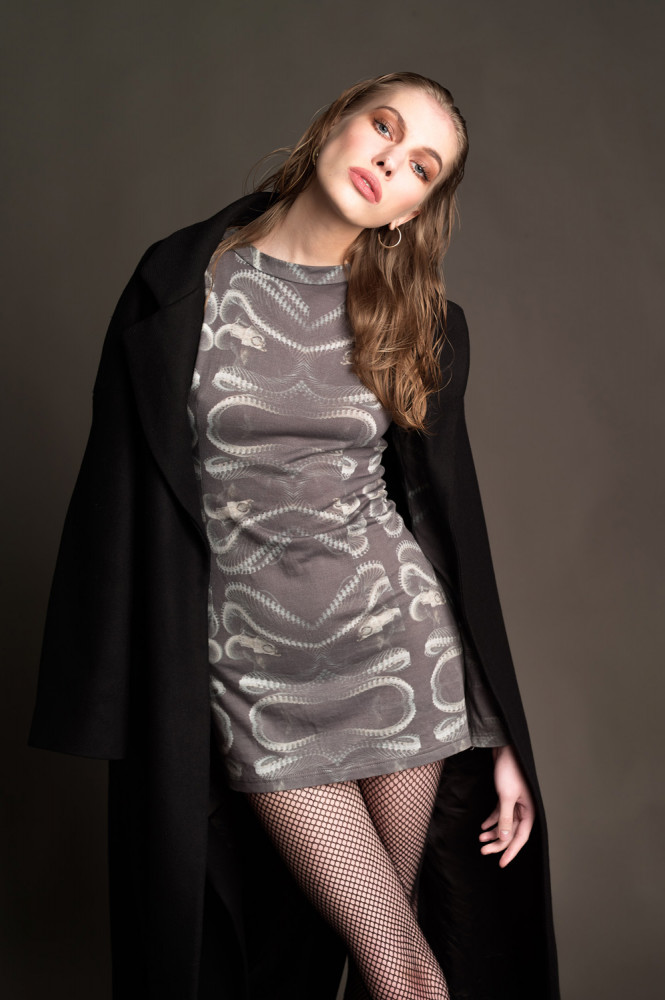
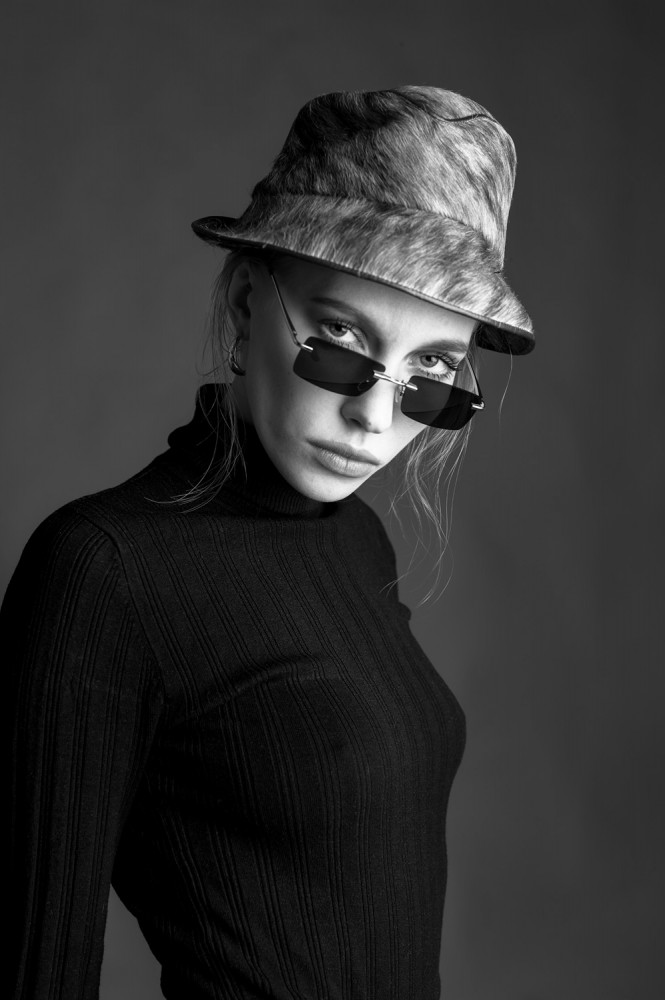
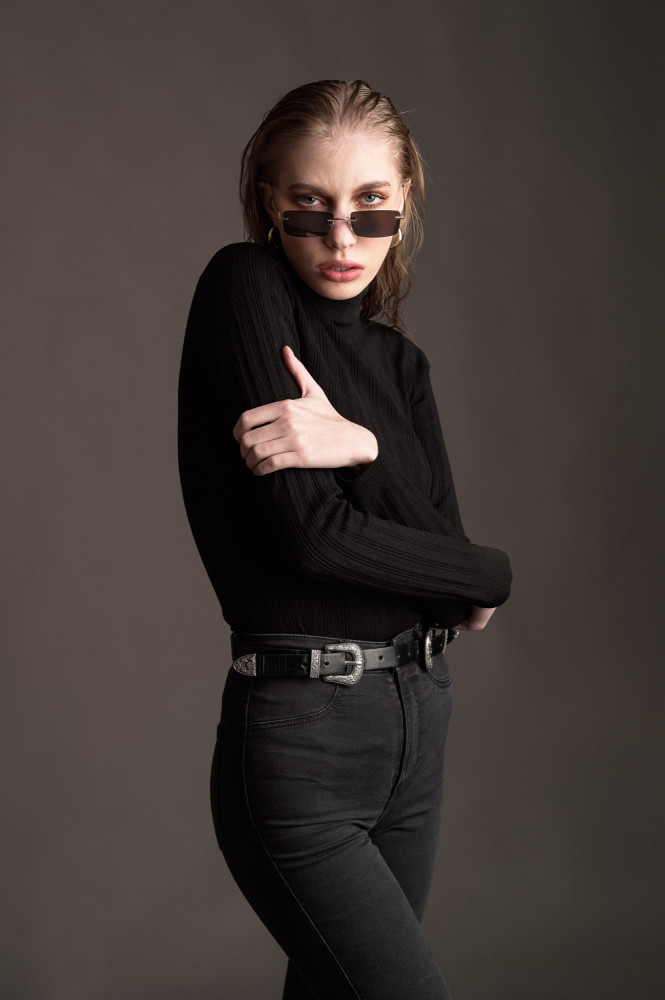
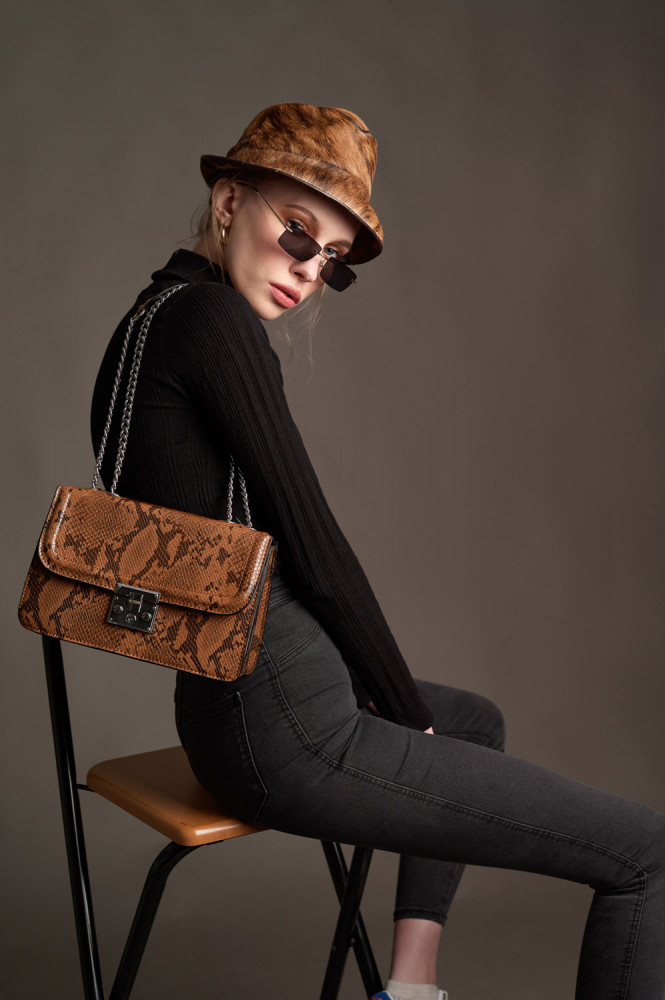


















INTERVIEW
Riccardo Bottero
PHOTOGRAPHY Riccardo Bottero STYLING Valeria Alaggio HAIR & MAKEUP Anna Korn MODEL Vera Krylova @ Wonderwall Milan CAMERA Leica S (Typ 006) with Summarit-S 70 f/2.5 ASPH. (CS)
With a restricted use of props, simple lighting, balanced colour, or black and white, Riccardo Bottero creates a minimalistic and intimate back-drop for ‘Stripes´Roll’, where model Vera Krylova expressively presents herself like a true rocker.
What led you to becoming a photographer?
I have liked photography since I was a child. I was fascinated with the possibility of catching the moment and visualizing it in print. The transition to digital was quite shocking for me, but now I’m good, as I can easily share digital and analogue and use the best of both worlds. Also, photography led me to connect with people in a stronger way and I feel good about that. Finally, I’m fascinated by fashion because of its complexity in connecting different people to work on the same project, and the uniqueness of the story you write with your camera every day.
How would you describe your style and what type of fashion photography is it?
I like to portray people and situations with my camera. I ensure that the focus of the editing is about colour palette and ambiance, while maintaining a great respect for the human figure. I never use filters like “liquify” even in fashion shoots.
Do you prefer to work on location, in nature or in the studio?
I like the studio for the great possibilities in terms of the lighting and the intimacy that you can create with the subject; but, for me, location shooting is always the best. I like to explore new places and shoot in ambient light if possible.
What photographic influences are reflected in your work?
I really appreciate reportage, and sometimes I think my fashion shooting is greatly influenced by that: I like to put my subject in a real place as opposed to creating an artificial one. For instance, I really appreciate the black and white photos by the likes of the Italian reportage photographer Ferdinando Scianna, when he shot Marpessa for Dolce & Gabbana back in 1992.
Your set in ‘Stripes´Roll’ is quite complex, and very minimalistic. What's the idea behind it?
You correctly identified my intention. I tried to create a very simple, one-light scheme (a medium softbox) and enrich it with a fill light in some of the shots, focusing more on the pose. The attitude of Vera helped to create the right “Rock” mood.
Do you prefer to combine black and white with colour like in ‘Stripes´Roll’, or what's your photography like in general?
In fashion shooting I often like to mix black and white and colour. For the colour I tend to maintain a soft range. But it isn't a rule. The black and white image is important to me in order to maintain the focus on the subject; but, of course, in fashion you must appreciate the clothing so it's very rare to shoot in such a minimalistic way. But in general I don’t like to be too strong with the colour palette in my images.
Do you prefer to work with the same people, or do you also try out something new?
I usually like to work with my team because of the synergy that can only be created with the people you work with: fashion is not a one man show. But of course, for more complex projects it's good to connect with new people and have some fresh air.
You used Leica’s medium format S 006 camera. In what way did the camera work for you?
I’m in love with my S camera: the image quality mixed with its portability is perfect for my needs. It’s very compact for a medium format and I can work freehand on location. Also the CS lenses give me the possibility of mixing flash and continuous light when needed.
What’s your next project?
I’m working on black and white portraits. They are very strong and minimalistic; I really love the Pandalis work displayed in the first edition of the S Magazine. For the fashion part, I’m working on new shoots to set up in Italian cities where I can mix landscape, architecture and fashion.